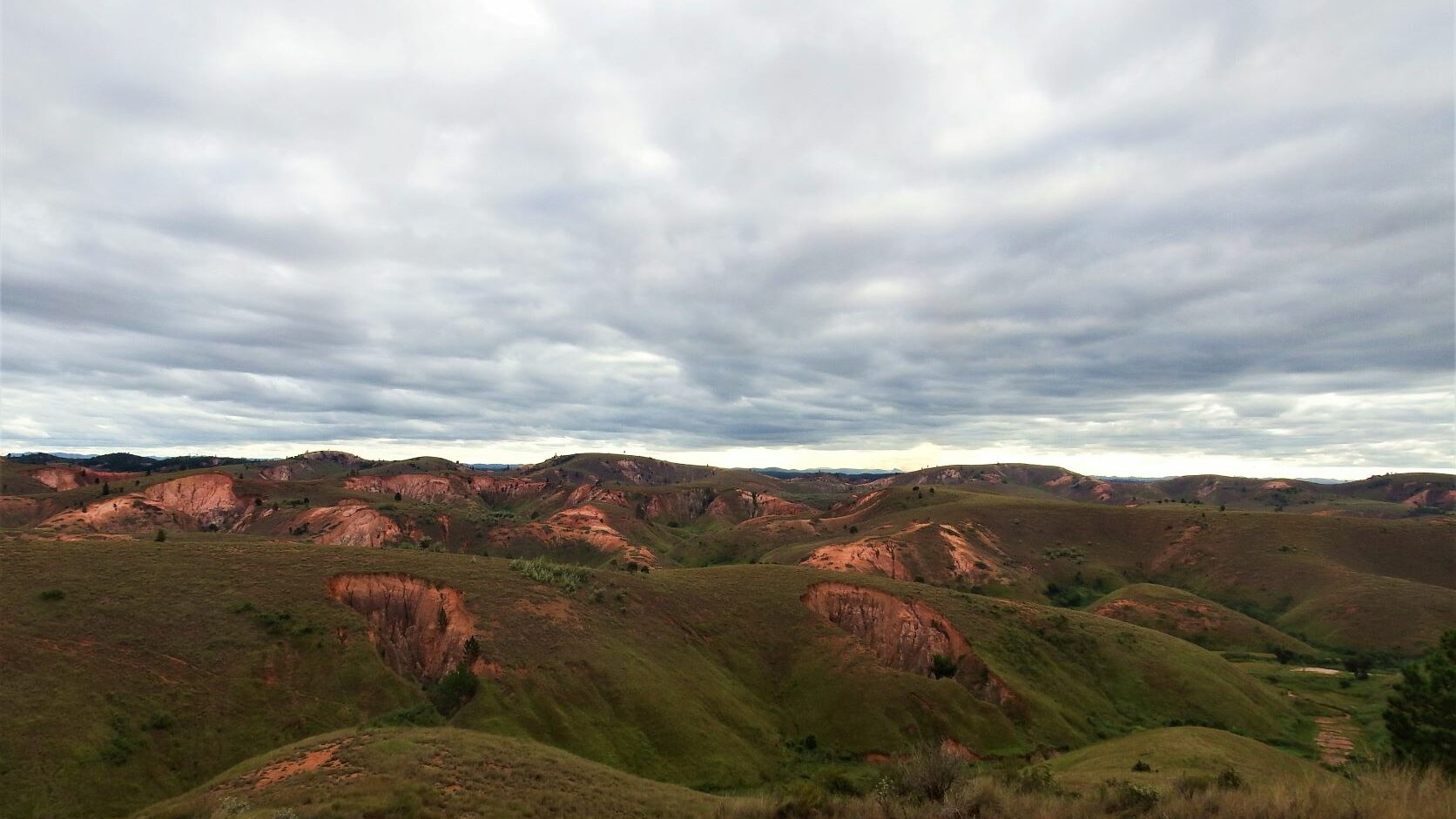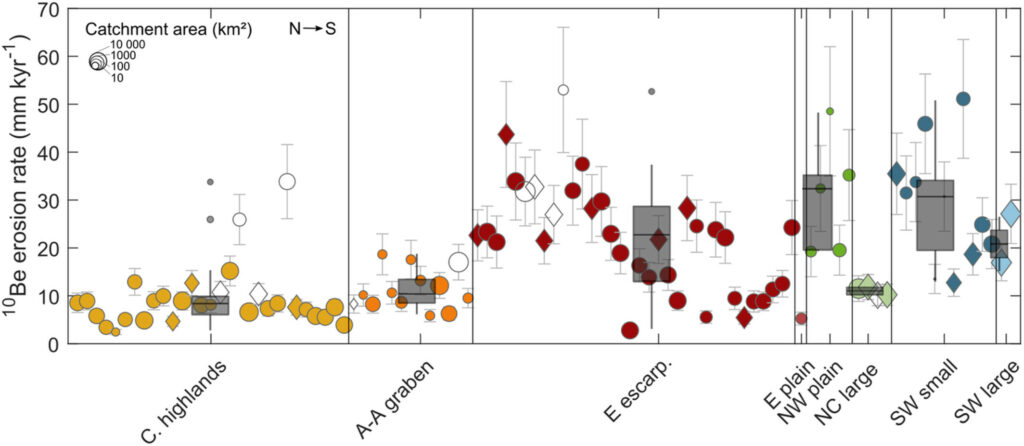Madagascar is a microcontinent with locally steep topography and active seismicity despite being surrounded by passive margins. Cosmogenic nuclide analysis of river sediment provides insight into catchment-wide erosion rates and dynamics. In this paper, we investigated spatial patterns and controls on 10Be-inferred erosion rates in Madagascar, a moderately seismically active microcontinent surrounded by passive margins with locally steep topography and a climate that varies from humid tropical to semiarid.

We use a compiled dataset of 99 detrital 10Be measurements, 63 of which are new, covering more than 30% of the country and a wide range of topographic, bioclimatic and geologic characteristics. Overall, 10Be erosion rates are low (2.4–51.1 mm kyr−1), with clear differences between regions. The lowest rates are measured on the central highlands ( 8 mm kyr−1), in the Alaotra–Ankay graben ( 11 mm kyr−1) and in the large north-central catchments ( 11 mm kyr−1). Higher rates are found on the steep eastern escarpment ( 20 mm kyr−1), in the northwest ( 31 mm kyr−1) and in the southwest ( 29 mm kyr−1).

Figure shows the 10Be erosion rates organised from north to south for the different regions. Marker size represents the catchment area. Boxplots are included for regions that contain sufficient sampled catchments. Hollow dots represent outliers (id = 30, 32, 37, indicated by grey boxplot dots) and catchments in the east that encompass more than one region (id = 94, 95) and are not included in statistical analysis.
Higher 10Be erosion rates were associated with lower river concavity (more convex shaped rivers) and higher seismic activity both at the level of individual catchments as well as at the regional level, while higher lavaka densities explain regional variations. No relationship between 10Be erosion rates and slope gradient or river steepness was observed, which brings into question the general applicability of fluvial metrics to constrain vertical incision rates in a slowly eroding landscape such as Madagascar.
While 10Be concentrations suggest that rates of landscape change in Madagascar are low, there are indications that chemical weathering rates may outpace CRN-derived denudation rates, pointing to the importance of deep weathering and removal of dissolved materials. In thick regolith-mantled landscapes, mass losses by deep weathering and sub-surface dissolution should be considered alongside with mass losses by physical erosion.
More information : Brosens, L., Cox, R., Campforts, B., Jacobs, L., Vanacker, V., Bierman, P. et al. (2023) The slow downwearing of Madagascar: Inferring patterns and controls on long-term basin-averaged erosion rates from in situ 10Be at the catchment and regional level. Earth Surface Processes and Landforms, 1– 18. Available from: https://doi.org/10.1002/esp.5586
References
Cox, R., Bierman, P., Jungers, M.C., Rakotondrazafy, A. F. M. (2009) Erosion rates and sediment sources in Madagascar inferred from 10Be analysis of lavaka, slope, and river sediment. The Journal of Geology, 117(4), 363– 376. Available from: http://www.journals.uchicago.edu/doi/10.1086/598945
Wang, Y., Willett, S.D., Wu, D., Haghipour, N. & Christl, M. (2021) Retreat of the great escarpment of Madagascar from geomorphic analysis and cosmogenic 10Be concentrations. Geochemistry, Geophysics, Geosystems, 22(12), e2021GC009979. Available from: https://onlinelibrary.wiley.com/doi/10.1029/2021GC009979